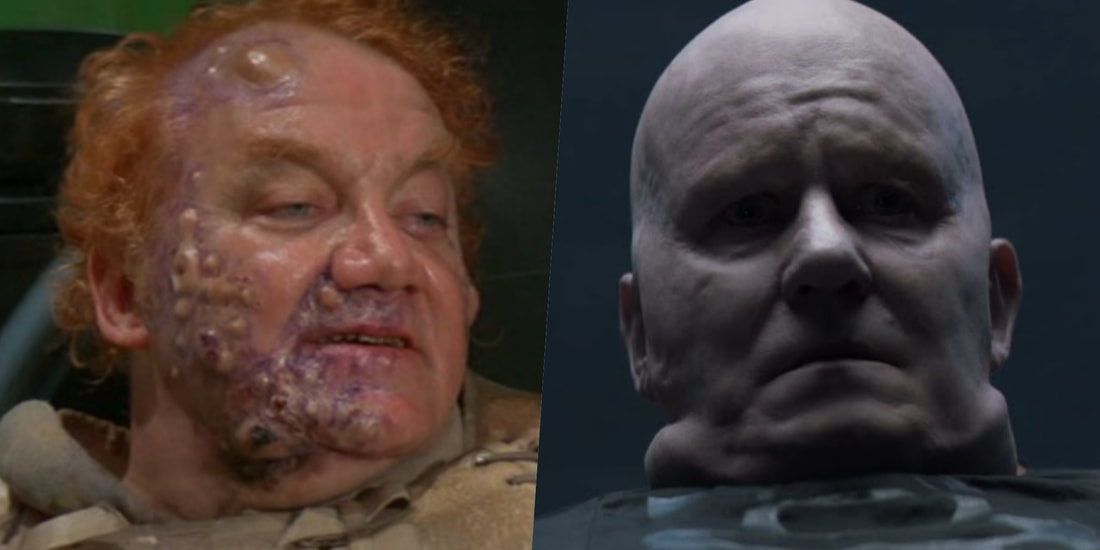By Marianna Neal
The sands of Arrakis have again received the big-screen treatment, and this time the audiences are welcoming the desert planet with open arms. Denis Villeneuve seems to have achieved the impossible by bringing Frank Herbert’s “Dune” (well, half of it, for now) to cinematic life – a novel that has been considered unfilmable for decades. Looking back at David Lynch’s 1984 adaptation, panned by critics and audiences alike, a question arises: what makes this new “Dune” so successful as a film and as an adaptation? What are the essential things Villeneuve got right that Lynch didn’t?
The Tone
One of the most critical aspects of adapting an epic story such as this one from book to screen is capturing the tone and essence. Putting the unintentionally hilarious moments of Lynch’s “Dune” aside, the bigger problem with the 1984 version is that it never quite communicates what this world feels like cohesively, nor does it carry the gravitas of the original work. Villeneuve, on the other hand, is very comfortable with this type of sci-fi. As someone who has loved the novel from his teenage years, the director clearly understands what’s at the core of this story and what makes it resonate with readers to this day. Whether capturing the vast landscapes of different planets or the more personal moments between the characters, he never loses his grasp on the overall picture and the story’s soul. Combining the stunning visuals with Hans Zimmer’s moody score, the 2021 “Dune” comes together as an experience that absolutely rings true to its origins.
The Storytelling
Boiling a story this big down into one film in a coherent way is incredibly difficult, if at all possible, and this is where splitting it into two parts was precisely the right move. Gone are the overbearing narration and voiceover of the 1984 version and the incessant “inner voice,” which were a constant distraction as the film relied on telling the audience what was going on instead of showing. Villeneuve doesn’t race to the finish line and is able to ease the viewers into this complex world of politics, scheming, mystery, and prophecies while also sticking to the plot and characters. It’s very impressive how close this new adaptation is to the first half of the novel, condensing the source material in an understandable way – we understand the characters, their motivations, and what’s at stake. We see the world around them and the clash of different cultures. It’s not something that needs to be explained or narrated – it’s right in front of our eyes, and every shot of “Dune” is filled with the filmmakers’ care and passion for this world. It just makes sense, and while it’s easy to follow (as long as you’re paying attention), it never sacrifices complexity for the sake of clarity.
The Protagonist
Look, I am not here to disrespect Kyle MacLachlan – after Lynch’s “Dune,” he went on to do some fascinating work, particularly with David Lynch himself. But the truth is, in his feature film debut, he looks much more like a grown man trying his best to conjure up his boyish charm rather than a 15-year-old boy struggling with accepting his path. It doesn’t help that the dialogue he is given often feels unnatural and fragmented, and as mentioned earlier, a lot of it happens through “inner voice” narration. In the first half of the story, Paul Atreides is generally not an easy character to relate to or get behind. The correct casting is especially crucial in this case, and after seeing Timothée Chalamet in the role, it’s now hard to imagine anyone else portraying this character. The actor brings some much-needed nuance to the role and beautifully conveys the weight of expectations placed on him since birth. A lot of it is, once again, in the writing – the 1984 version fast forwards through Paul’s journey in a way that never really makes any of it feel earned, while Villeneuve does not intend to cut any corners when it comes to the protagonist’s path through the desert. We will have to wait until 2023 to see the second part of the story, but something tells me the payoff will be so much more satisfying this time around.
The Villain
Everyone knows that a story is only as good as its villain, and when it comes to the portrayal of Baron Vladimir Harkonnen – there is no question about which film gets it right. While many characters in Lynch’s “Dune” sadly feel like caricatures, the one that hurts the story the most is the awkwardly floating Baron, who inspires amusement rather than terror. Enter the menacing Stellan Skarsgård. Everything about this new version of the Baron is ominous. The portrayal is nothing short of horrifying: from his overall look and presence to the actor’s performance and the floating itself, which now feels like an intimidation tactic. Even the way he eats threatens to challenge Denethor and his tomatoes from “The Lord Of The Rings: The Return of the King”! This may not be a huge role as far as the overall runtime goes, but it’s a significant one, and when it comes to Villeneuve’s “Dune,” the Baron is undoubtedly memorable in all the right ways.
The Scope and Scale
Finally, it’s impossible to praise the new “Dune” without talking about the scope and scale because, to put it simply, it’s massive. It’s an incredibly ambitious effort that pays off, as the film feels astonishingly grand, sometimes to the point of overwhelming the viewers with its scale. There are many shots, both exterior, and interior which place the characters against a lot of negative space, emphasizing how small they are compared to the world around them and the loneliness of the human experience. Different planets, endless landscapes, giant spaceships, dragonfly ornithopters, heavy spice harvesters, larger-than-life prophecies, tests of body and spirit, and of course, the unforgettable sandworms – all of this unfolds in front of our eyes as we watch the film in awe. I don’t want to fault Lynch too much for not nailing this back in the 1980s – he obviously didn’t have access to the visual effects technology available to filmmakers today, and the troubled production was a struggle to begin with. However, it’s undeniable that when it comes to the grandeur a film adaptation of “Dune” needs – the 1984 film pales in comparison to the new one and never quite makes the world feel as immersive and whole as it should. Denis Villeneuve is a master who knew what he was doing here, and as he promises us that this is only the beginning, 2023 can’t come soon enough so we can see what marvels he has in store for us in “Dune: Part Two.”
Have you seen both film adaptations of “Dune?” If so, which of the two do you prefer and why? Let us know your thoughts in the comments section below or on our Twitter account.
You can follow Marianna and hear more of her thoughts on the Oscars and Film on Twitter at @ImpressionBlend







